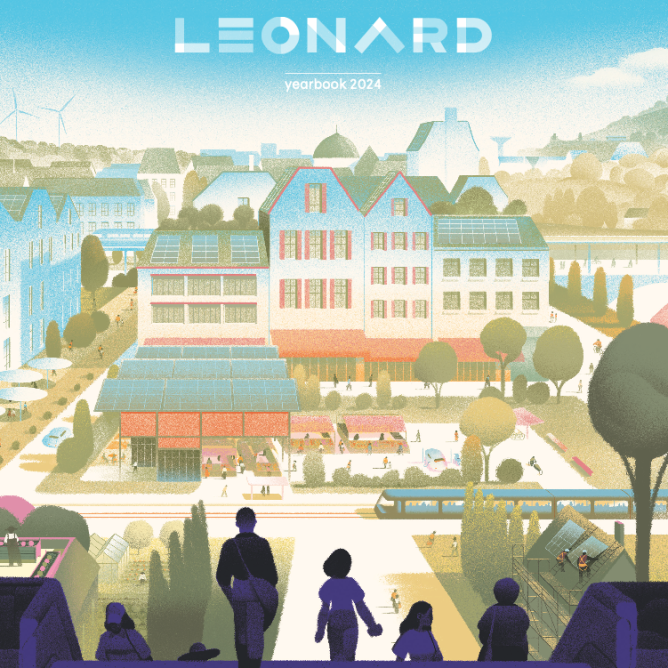In a column published in Le Monde in April 2020, 13 researchers from France’s National Natural History Museum wrote about the importance of urban biodiversity. They criticise the “hygienic-lead urban planning inherited from the 19th century which advocates the strict separation of living and social systems.” When a city is capable of integrating complex natural ecosystems, it benefits from air, water and soil purification, invasive species control, urban farming, plus many cultural and education benefits. At the same time, the recent lockdown period has caused increased awareness amongst urban populations. A study carried out during the middle of the health crisis by IFOP for BNP Paribas, showed that outdoor natural spaces are now more than ever one of the main priorities when choosing housing.
Now such observations have been made, all that remains is to avoid the errors of sweeping statements that never come to fruition and greenwashing. And those inventing concrete solutions for the advent of a natural city share this conviction on both the technical and financial aspects.
A city’s cycles
People are becoming increasingly aware of the situation, as Philippe Clergeau, professor at France’s National Natural History Museum and consultant in urban ecology, explains: “We must aim for a living landscape, not just an aesthetical one. It’s not enough to think that a bit of green street furniture and plants are going to solve our problems.” Today’s goal is to successfully bring about a paradigm shift, and to move away from landscaping to ecological engineering. For Paola Megnier, a consultant in biodiversity and urban farming at Urbalia, there’s no miracle solution. “We mustn’t view nature under a technology-centred spectrum. Innovation is about changing the way we see the city,” explains the ecologist, before listing solutions that are based on detailed knowledge of ecosystems, rather than a heavy arsenal of technology. “We are talking about green buildings that create diverse environments within the city, green roofs for keeping the city cool and rain water management, and replacing lawns with rain gardens that also collect rain water, or to recycle waste water using systems inspired by the tide.” The impact of such solutions can be measured thanks to various projects brought to life by Urbalia. “We are working with architect Patrick Arotcharenon the marine biomimicry centre of excellence in Biarritz. The building is integrated into the hill with a roof that mimics the seas’ waves. The building has a strong green influence, and the wave-like roof is covered in plants inspired by the surrounding ecosystems. We are aiming for a ‘mirror roof’ concept: the side closest to the beach offers a dune-like ecosystem, which, as you work inwards, gradually turns in a system inspired by the moors, before reaching the forest on the other side,” explains Paola Mugnier.
Provider city
Urbalia has created a small urban farm on the roof of a factory in Besançon, which is now capable of producing food for its workforce. Elsewhere, while Europe’s largest urban farm opened its doors in Paris, Les 48h de l’Agriculture Urbaine showed the growing interest in the subject. Many actors in the science industry support the implementation of this trend, including the lab recherche environnement. This scientific partnership between VINCI and ParisTech focuses a large amount of its work on “the processes and functioning of living organisms in the city”, so explains Jean Roger-Estrade, professor in agronomics and a researcher at the lab. For the past 10 years now, the lab has been studying the impact of urban planning on biodiversity (thanks to its Biodi(V)strict tool) and has carried out experimental urban farming projects. For Jean Roger-Estrade, the challenge is therefore to “create and maintain ecological niches in the city” in order to maintain biodiversity quality, but also to optimize heat networks and soil quality. The lab’s first publication Agriculture urbaine : comment aménager une toiture-terrasse (Eyrolles) offers a guide on best practices and offers an overview of this growing sector. From low-tech solutions to hydroponics, aeroponics and bioponics, via the special features of urban farming and the emergence of circular buildings, each topic is covered in detail.
New accounting methods
As always, behind the trend is the question of economic models that support the emergence of true urban biodiversity. “There’s an additional cost linked to changing current practices, but we benefit in the long term. As heat waves and flooding become increasingly common, open ground surfaces and vegetated areas will enable us to regulate such events,” explains Philippe Clergeau. The main challenge today is assessing the benefits ofbiodiversity in order to transform an economic doctrine which hardly takes it into account. A report published in 2019 by Mission Economie de la Biodiversité offers two solutions forassessing the impact of Solutions Fondées sur la Natures (SfN, or ‘nature-based solutions’). The first concerns the socio-economic impact, and the second is based on what value ecosystem services bring. As such, the example of Parc des Aygalades in Marseille is aperfect example. From a socio-economic point of view, this urban wetland and biodiversity reintroduction project should generate €1.75 million in turnover per million euros invested, and €1.88 million per million euros of operational expenses. As for ecosystem services, the economic contribution for water supply is estimated at €75,700 per year, food production at €14,000 per year, climate regulation at €743,000 per year and water treatment costs avoided at €65,000 per year…
Despite the evidence, the biodiversity economy still lacks the tools to accelerate its growth. An important part of the solution is perhaps finding new accounting methods, ones which don’t separate the environmental impact from the financial result. The most well-known model today is undoubtedly the one Jacques Richard suggested in 2012. Named CARE (Comptabilité Adaptée au Renouvellement de l’Environnement, or ‘accounting adapted to environmental renewal’), financial, natural and human capital together make up a company’s balance sheet. It’s a way of re-balancing the fundamentals on which our economies are based.


